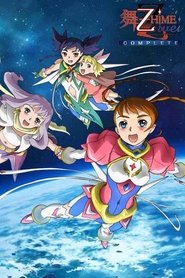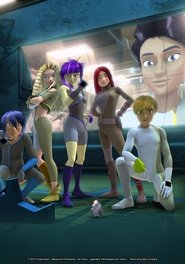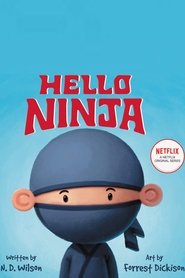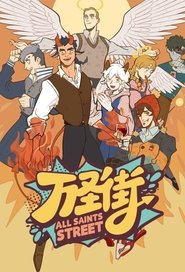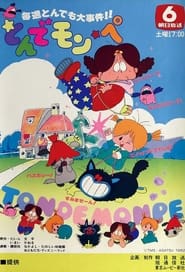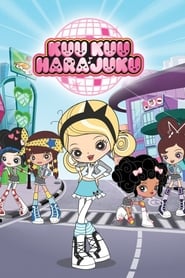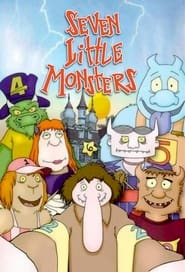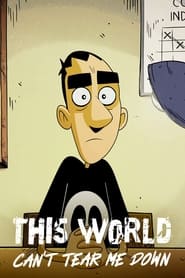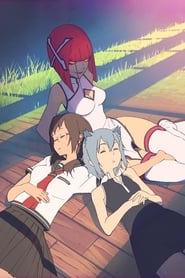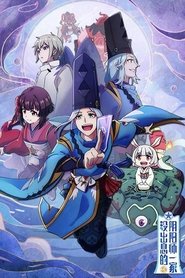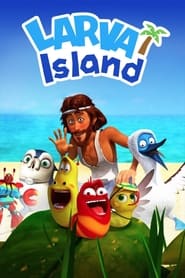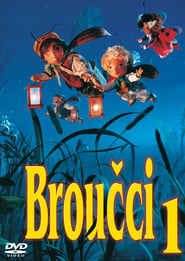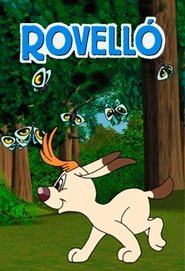Popular Animation TV Series on Tub Tv - Page 342
-
Rantanplan
2006
-
My-Otome Zwei
2006
My-Otome Zwei
2006
star 7.7My-Otome Zwei takes place one year after the events of My-Otome. Arika is now a full-fledged Otome (though still under the tutelage of Miss Maria) and Nagi is incarcerated in a prison somewhere in Aries. The various nations are at peace with one another and plan to hold S.O.L.T. (Strategic Otome Limitation Talks) to discuss limiting the numbers of Otome. A mission to destroy a meteor threatening to collide with Earl sets into motion a chain of events which result in a mysterious shadowy figure attacking Garderobe and several Otome as well as a new, more powerful version of Slave appearing across the planet. To make matters worse, Queen Mashiro disappears following an argument with Arika. The series follows Arika's search for Mashiro as well as Garderobe's attempts to uncover the truth behind the shadowy figure. -
MetaJets
2009
MetaJets
2009
The year is 2067 and fans all over the globe follow the ARC, a futuristic NASCAR in the clouds! Four of the world's best pilots are in a continuous race for first place on the track. Off the track is a different story. There they become an elite flying team known as the Metasquadron. Under the command of Captain Strong, the Metasquadron transform their lightening fast race jets into battle-ready fliers. The pilots work together to protect people globally from harm, usually at the hands of the evil General Raven and his Black Cloud organization. -
Nell the Wandering Girl
1979
Nell is a young girl living with her grandfather, Mr Trent, the owner of a shop in London. As he couldn't payback a loan he made, he has to flee with Nell. They decide to search for Nell's mother, who is living somewhere in Great Britain... -
Hello Ninja
2019
Hello Ninja
2019
star 6BFFs Wesley and Georgie and their silly cat sidekick Pretzel transform into ninjas and enter a magic world, where they solve problems and save the day. -
All Saints Street
2020
All Saints Street
2020
star 7.2The pure and cute little devil Nini lives in Room 1031 of Wansheng Street Apartment. His roommates are no ordinary people: The lazy and wacky vampire Ira who spends most of his time gaming or watching TV, the unlucky dancer werewolf Vladimir, the serious and old-fashioned angel landlord Lynn and his naive little sister Lily, and many more. What none of them realize is that the power of the demon king is sleeping inside of Nini. With evil forces in hot pursuit, can Nini and his friends head off disaster? -
Tonde Mon Pe
1982
Tonde Mon Pe
1982
Fifteen-year-old country girl Mon-Mon dreams of being a fashion designer and gets a job as an au pair to a rising star designer, Mrs. Kano, her baby girl PePe, and her silly writer husband. But PePe can make toys and animals do very odd things. Mon's employers don't seem to notice anything odd is going on, and she finds her dream job turning into a chaotically cute trial of wits she has no chance of winning. She's a sweet girl, hardworking and kind, but very unsophisticated and simply not used to walking teddy bears and talking stuffed animals. She eventually decides to leave her job and go home, but psychic baby PePe, who has come to love her, finds a way to make sure she stays. -
Kuu Kuu Harajuku
2016
Kuu Kuu Harajuku
2016
star 10Girl group HJ5, comprised of G with Love, Angel, Music and Baby, get in to all sorts of scrapes between shows while their manager does his best to get them to their shows on time. Based on an idea by Gwen Stefani A co-production between Canada, Malaysia and Australia, this series first screened in Australia on Network 10's channel 11. Three seasons have been produced. -
Smash Hit!
2004
Smash Hit!
2004
star 5.2Mitsuki Ikuta works for the Houchiku Corporation, making movies. To all who know her, she is perceived as being a very infantile woman, still wearing childish fashions. A fan of the detective movie genre, she suddenly finds herself chosen to be the main producer of a new film—but it's a "hero movie" (a genre generally considered childish). Determined to succeed, regardless, she takes on the job. -
Seven Little Monsters
2000
star 7.4About a family of seven monsters and their mother. Each monster is named after a different number from one to seven, and each has unique physical characteristics. -
阿拉蕾大陆辽艺版
1981
阿拉蕾大陆辽艺版
1981
-
This World Can't Tear Me Down
2023
star 8.1When an old friend returns to the neighborhood, Zerocalcare wants to help him find his place back in the world. But what's the right thing to do? -
Bolek and Lolek
1963
Bolek and Lolek
1963
star 7.4Bolek and Lolek are two Polish cartoon characters from the TV animated series by the same title. They are based on Władysław Nehrebecki's sons, named Jan and Roman, and were partially created by German-born Alfred Ledwig before being developed by Władysław Nehrebecki and Leszek Lorek. The series is about two young brothers and their fun and sometimes silly adventures which often involve spending a lot of time outdoors. They first appeared in an animated film in 1963. The names of the two characters are diminutives of Bolesław and Karol. In English, the cartoon was distributed as Jym & Jam and Bennie and Lennie. Some episodes were seen as part of Nickelodeon's Pinwheel. In 1973 the creators of the film placed on the request from the female viewing audience a girl character by the name of Tola. The first time she appeared in occurred in the episode entitled "Tola". In total, Tola appeared in 30 episodes. Most episodes do not have dialogues. Exceptions are feature-length films and the series from the 1980s, whe -
Yozakura Quartet: Hoshi no Umi
2010
star 6.3Yozakura Quartet ~Hoshi no Umi~ (lit. Yozakura Quartet ~Sea of Stars~) is a series of OVAs released covering the Hoshi no Umi arc of the manga. ~Hoshi no Umi~ consists of three DVDs that was released between Oct. 8, 2010 and Nov. 9, 2011 together with manga volumes 9, 10, and 11. -
Useless Onmyojis
2019
Useless Onmyojis
2019
-
Larva Island
2018
Larva Island
2018
star 6.9Stranded on a tropical island, two silly larva buddies find slapstick fun in everything from discovering food to meeting new animal friends. -
Lucas et Lucie
1995
-
2
1992
2
1992
-
Scruff
2000
Scruff
2000
Scruff is a 2002 television series by D'ocon entertainment. It features the story of a puppy, Scruff, who is adopted by a farmworker named Peter. The show was directed by Antoni D'Ocon. The show was distributed in English by BKN. The series' animation is provided by Toon Boom Harmony creating the 2D traditional animated characters and a 3D computer-generated background.
 Netflix
Netflix
 Amazon Prime Video
Amazon Prime Video
 Apple iTunes
Apple iTunes
 Apple TV Plus
Apple TV Plus
 Disney Plus
Disney Plus
 Google Play Movies
Google Play Movies
 Paramount Plus
Paramount Plus
 Hulu
Hulu
 HBO Max
HBO Max
 YouTube
YouTube
 fuboTV
fuboTV
 Peacock
Peacock
 Peacock Premium
Peacock Premium
 Amazon Video
Amazon Video
 The Roku Channel
The Roku Channel
 AMC+
AMC+
 Kocowa
Kocowa
 Hoopla
Hoopla
 The CW
The CW
 Vudu
Vudu
 Starz
Starz
 Showtime
Showtime
 PBS
PBS
 Pantaflix
Pantaflix
 FXNow
FXNow
 Tubi TV
Tubi TV
 Kanopy
Kanopy
 Comedy Central
Comedy Central
 Crunchyroll
Crunchyroll
 Microsoft Store
Microsoft Store
 Redbox
Redbox
 Sun Nxt
Sun Nxt
 ABC
ABC
 DIRECTV
DIRECTV
 Crackle
Crackle
 Fandor
Fandor
 Plex
Plex

